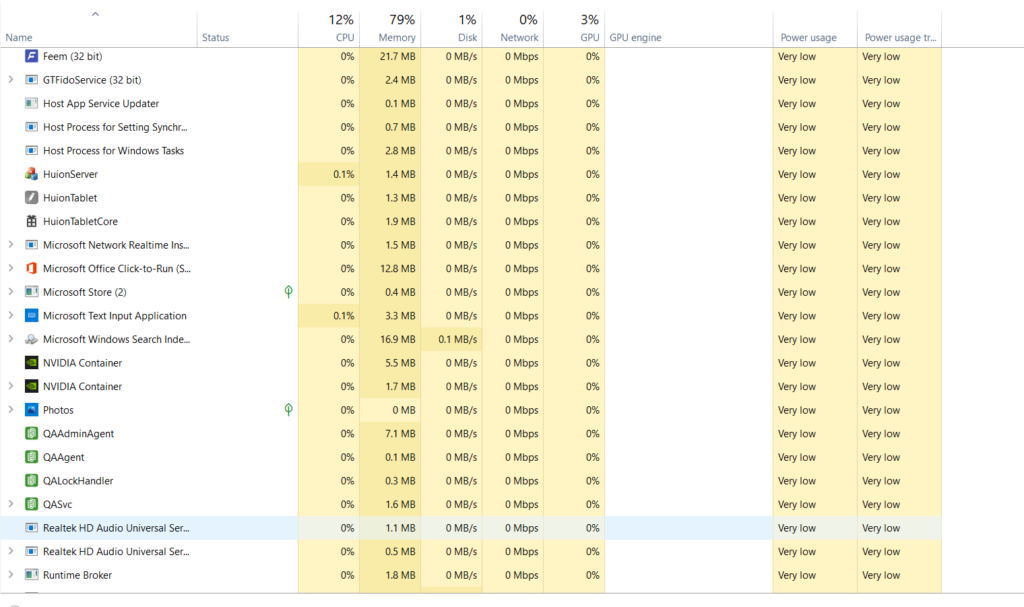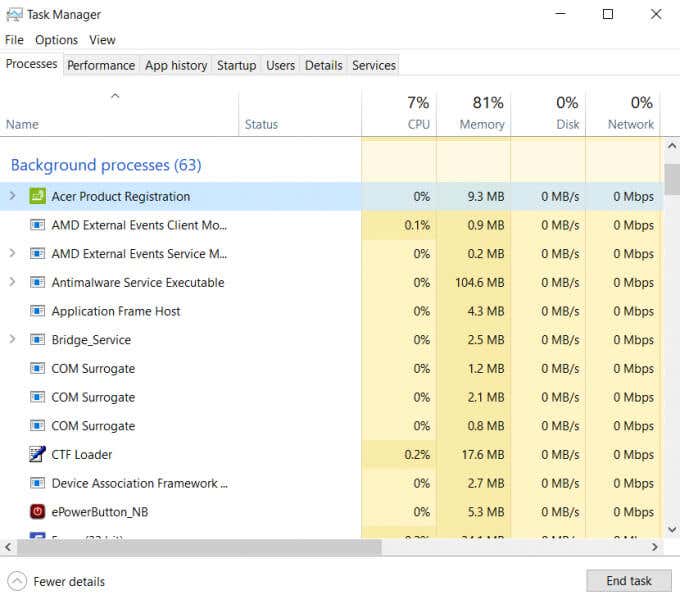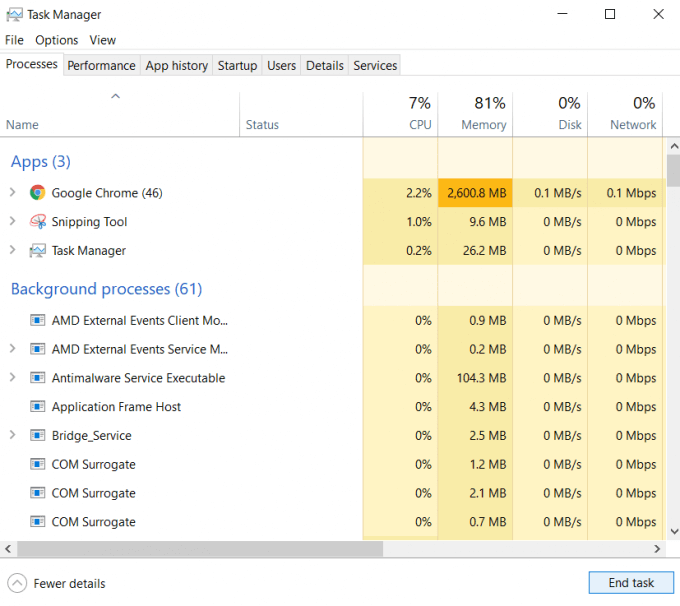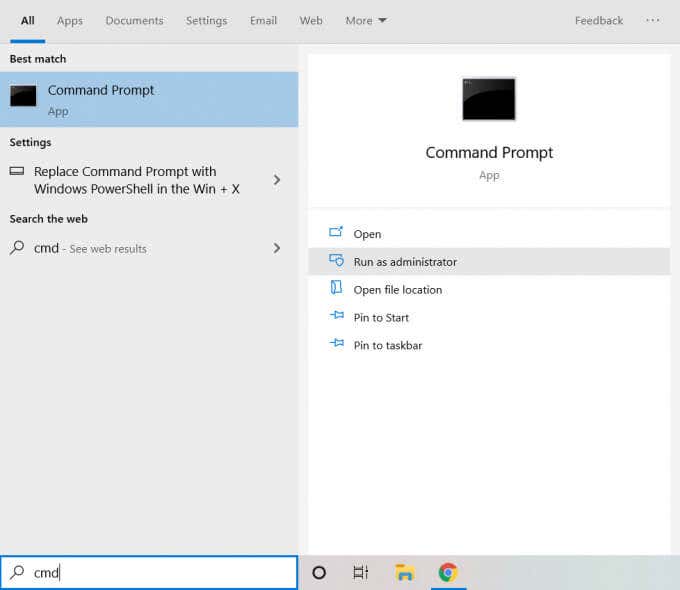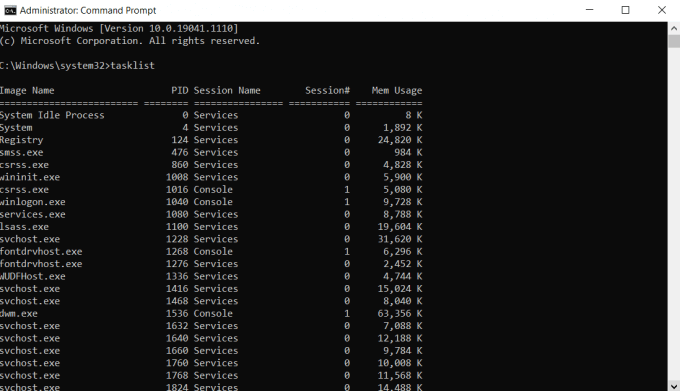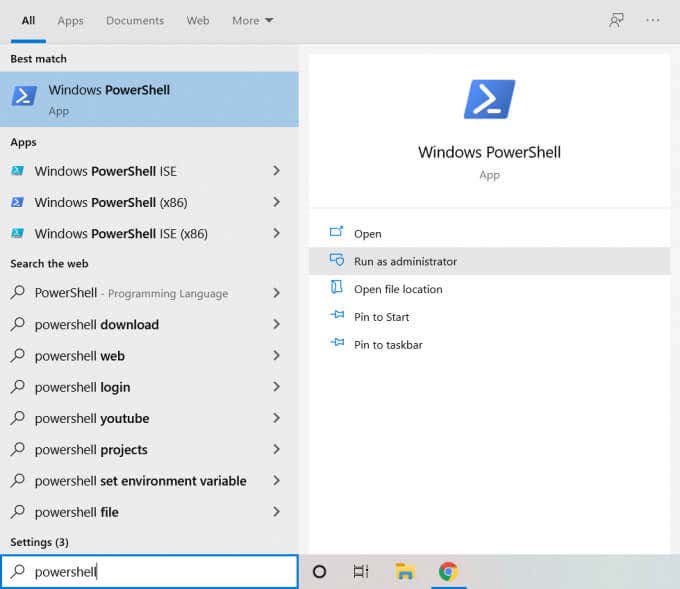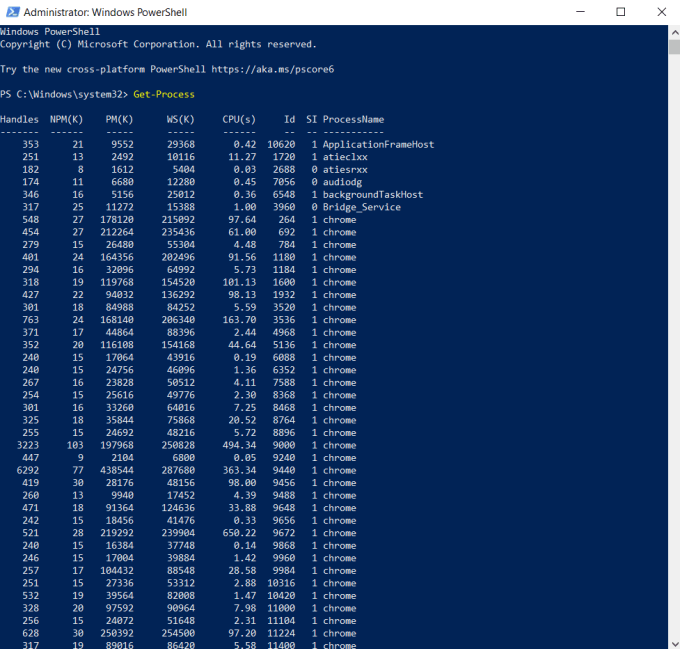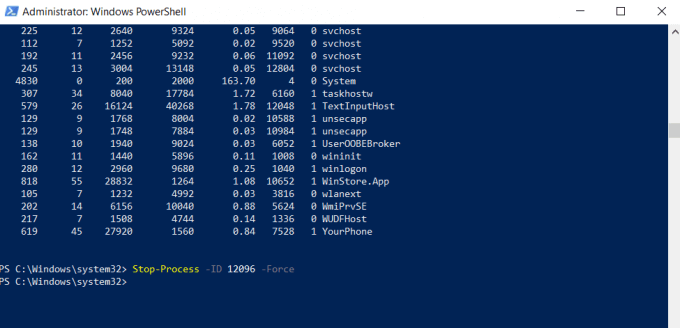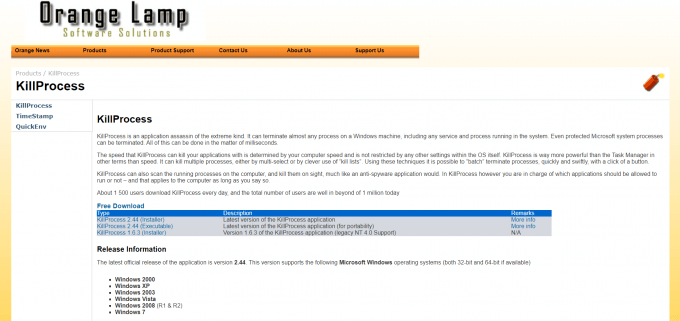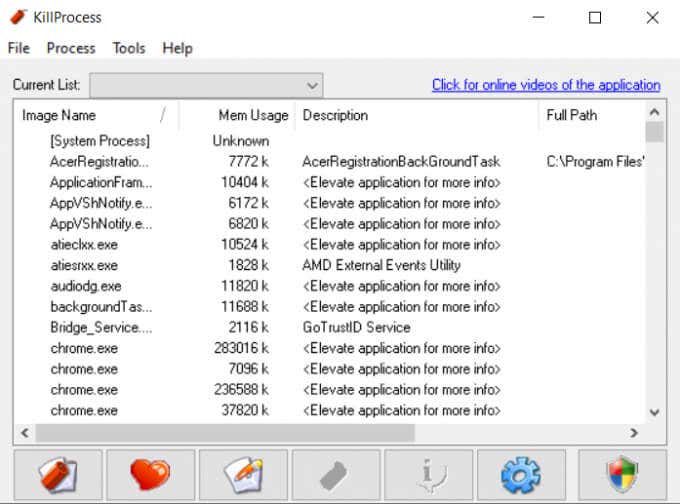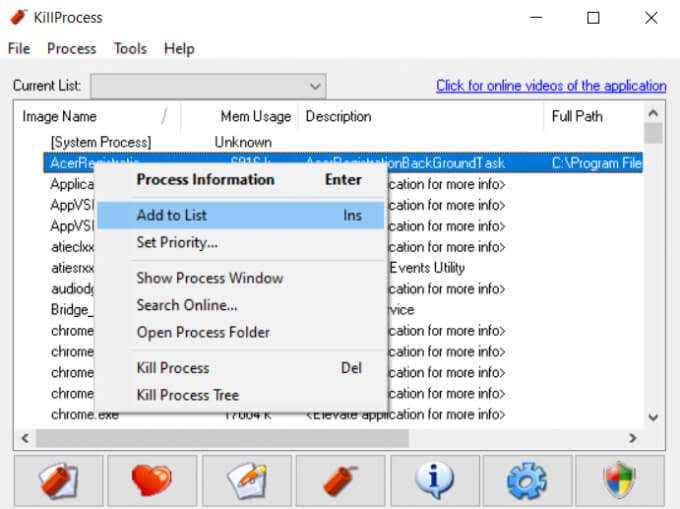Not only does this boost the performance of your PC, but it can also help stave off spyware and viruses. And before you ask: no, it’s not hard to kill a process in Windows 10. We’ll go over all the different ways you can do this safely and easily.
Why Kill a Process in Windows 10?
Each running application in Windows is composed of one or more “processes.” These processes are responsible for writing things to memory, reacting to user input, and performing all the actual work behind a computer program. The thing is, not all processes are represented by an active window on your desktop. Windows system processes, for example, run quietly in the background without any explicit permission from the user. And this is where the problem arises. Many unwanted applications like viruses or bloatware also run as hidden processes in the background, consuming resources and slowing down your computer. You can safely shut down even some Windows processes without impacting your computer.
Killing Unnecessary Processes With the Task Manager
The Windows Task Manager is the default tool for managing programs and processes on your computer. You can use it to view, analyze, or even terminate running applications and processes. Its only drawback is its limited permissions. The Task Manager cannot kill protected processes (including system tasks and some viruses). In addition, it can be tedious to manually select and terminate all the target processes each time you run your computer.
Using Command Prompt to Kill a Process in Windows
If you prefer command-line tools, then you can kill a process using CMD too. The Command Prompt gives access to many useful utilities, including one called Taskkill. As the name suggests, you can use Taskkill to kill any running task or process. If you run CMD as an administrator, you can even kill protected tasks. It may seem counter-intuitive to use a command-line tool when the Task Manager can do the same without any need for typed commands. This is because we have only touched upon the most basic way to use Taskkill. There are many other ways to filter the processes without having to look through them manually.
PowerShell
CMD is not the only method to kill Windows processes with typed commands. Powershell is Windows’ built-in scripting language that offers many similar capabilities. In a way, Powershell is just a more verbose form of the Command Prompt. The power of Powershell comes from its ability to create scripts of commands, which Windows can execute at leisure. This allows you to automate complex tasks on Windows. If PowerShell seems underwhelming to you, it’s because we are using it like cmd. PowerShell is meant to create autonomous scripts that perform complex tasks independently, without any real-time feedback or input. While you can use it this way, the Command Prompt is frankly better at it.
Using KillProcess
So far, we have looked at tools and utilities present in your computer by default. While these certainly can get the job done, they lack some useful features present in third-party tools. KillProcess is one such advanced task managing program. In addition to its ability to kill protected system processes, it also allows for creating a “Kill List”. Processes added to this list are automatically killed as soon as they enter active memory. This can be a great method to permanently shut down pesky bloatware. The best thing about this approach is that you don’t have to kill each process one by one. This Kill List remains saved even after you exit the program, so you only need to run KillProcess itself to terminate all unwanted processes at once.
Many Ways to Kill a Process in Windows 10
There are multiple ways to kill a process in Windows 10. The most straightforward method is to use the Task Manager. It allows you to view and terminate processes in an easy-to-understand GUI format. In case the Task Manager cannot kill the process, you need to use something more powerful. You can either try a third-party tool like KillProcess or use command-line tools to kill the protected process. To permanently shut down unnecessary background processes, prevent them from starting up automatically, or add them to KillProcess’ kill list.

